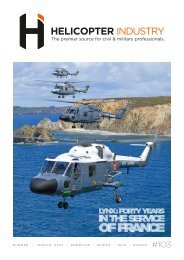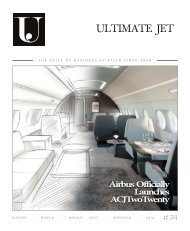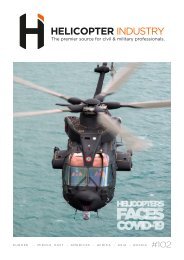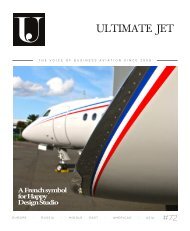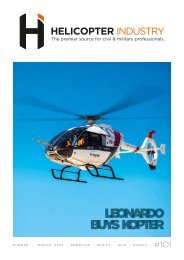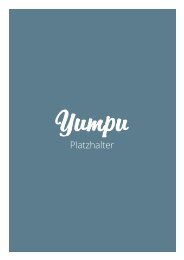Ultimate Jet #73 - Phenom 300E Flight Test
After more than 14 years, Ultimate Jet is the leading magazine dedicated to Business Aviation. In this latest issue, an analysis of how business aviation manufacturers faced Covid-19; an interview of Jahid Fazal-Karim CEO of JetCraft; a cabin design review by M&R Design Concepts; and discover the long awaited exclusive Embraer Phenom 300E Flight Test.
After more than 14 years, Ultimate Jet is the leading magazine dedicated to Business Aviation. In this latest issue, an analysis of how business aviation manufacturers faced Covid-19; an interview of Jahid Fazal-Karim CEO of JetCraft; a cabin design review by M&R Design Concepts; and discover the long awaited exclusive Embraer Phenom 300E Flight Test.
Create successful ePaper yourself
Turn your PDF publications into a flip-book with our unique Google optimized e-Paper software.
The perspective of the cabin and the passage from one living space<br />
to the other are underlined by white carbon profiles, which is the only<br />
material in high gloss finish in the cabin.<br />
The fluid exterior design is composed of two clear tone-on-tone<br />
colors. The lines start from the front of the Global 7500, following<br />
the fuselage curves in a regular way, then dispersing on the reactors<br />
and drifting into wide, irregular, dynamic and elegant curves. These<br />
curves are highlighted by their matt finish in contrast with the high<br />
gloss finish of the rest of the external paint.<br />
The «Horizon» concept:<br />
The idea behind this concept was to visually enlarge or increase<br />
the volume of the cabin by working specifically on the seat design,<br />
materials selection, and on specific creative patterns.<br />
A contemporary and cozy style for this cabin was applied with<br />
refined graphic details including metallic inserts around the table,<br />
side ledges and bulkheads.<br />
The general cabin bulkheads are covered with two species of<br />
contemporary veneer with satin finished. The grain is applied in<br />
the horizontal direction and an evolving metallic graphic design is<br />
integrated horizontally in the veneers following the same line as the<br />
valence panel and all around the tables and side-ledges. The main<br />
purpose of these details integration consists in visually enlarging the<br />
cabin.<br />
In the theater area, in order to create a more comfortable area and<br />
reduce the noise level, the bulkheads are upholstered in leather, and<br />
the same evolving pattern design is stitched on the leather. In order<br />
to give a rhythmic cabin and a horizon perspective, all doorframes are<br />
made out of dark veneer. In general, the main structure and design<br />
shape of the seats are in the same line as those of the Factory Global<br />
7500. The headrests however have been redesigned and reduced<br />
in length. This minor change visually increases the general volume<br />
of the cabin and the space between each seat. Each of the seats<br />
is upholstered with a mix of leather, fabric, with specific details in<br />
nubuck, such as piping. A general color combination of the seats<br />
has been selected, from a darker color in the front part of the cabin,<br />
getting lighter towards the rear. The main intent of this progression<br />
from dark to light is to visually increase the length of the cabin.<br />
Yet another way to enhance the cozy feeling of the cabin consists<br />
in using a combination of veneers for the structural parts of the<br />
credenza finishing, with leather and stitching details for the doors<br />
and the monitor holder.<br />
The carpet is a combination of one color with a mix of cut and<br />
loop pile. The two textures thus enhance the color differences. The<br />
general design pattern distances keep increasing towards the aft of<br />
the cabin in order to again visually increase the length of the cabin.<br />
Some of the detail elements used for the interior cabin are also being<br />
used for the paint scheme of the livery, with the idea of corresponding<br />
design language between the interior and the exterior. This bicolor<br />
exterior paint scheme with the evolving graphic design is used for<br />
the nose, engine and tail. The central split line dividing the fuselage<br />
in two, including a darker lower part, enables this exterior to be very<br />
dynamic with a sense of a long perspective.<br />
These two design concepts for Bombardier’s flagship further<br />
personalize today’s largest, roomiest, farthest flying purpose-built<br />
business jet on the market. n<br />
More about Global 7500<br />
<strong>Ultimate</strong> <strong>Jet</strong> I 51




